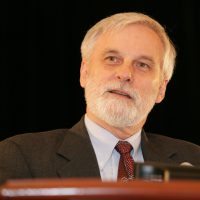It Depends

by Guest Author Peter C. Bishop, Ph.D
My daughter is a middle school language arts teacher in Northern California. She broke into teaching with Teach for America in a charter school in Houston. Early in her first year, she asked me, “Dad, how can I introduce middle school students to the future?” Right off the top of my head, I said, “Get them to answer questions with multiple answers, with an awareness that a good answer depends on many things, like context, for instance.” A few weeks later, I got a text from her that said, “The first student said, ‘It depends…’” Success!
Now a blog by Vincent A. Mastro, author of Aesop’s Childhood Adventures Series and Teacher’s Guides, identifies “It depends…” as one of the ways to demonstrate critical thinking. It’s an interesting piece because Mastro also uses Aesop’s fables to demonstrate his point.
Yes, nice, but what’s the relation to Teach the Future? Everything. Teaching the future requires that we teach about multiple futures–i.e., scenarios. We arrive at multiple futures by critically thinking about the expected or “official” future, what everyone thinks is going to happen. It well might, but it also might not, and that’s where teaching the real future comes in. We include the expected future in all those futures. In fact, we usually start there, but we don’t stop there. Rather we say that, even though that may be the most probable future, it is not the only one. There are other plausible futures that we must consider to understand the real futures.
All teachers want their students to think critically, and they can teach critical thinking by also teaching the future. It’s not hard. It’s just asking the question, “What might happen instead?” and wait for the answer that begins with “It depends…”

